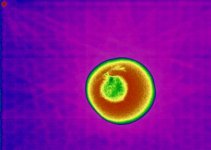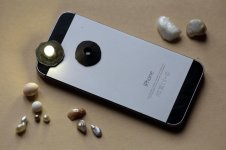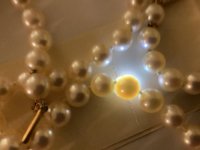barbaradilek
Well-known member
These pearls came from an antique shop in Milan about 5 years ago.They were sold as natural pearls with their original clasp.The clasp is 18ct gold marked with the French eagles head used between 1838 and 1919 as is the safety chain.The pearls are between7.40 and 7.55mm in size and the strand is 21” long.There is a lab report in Italian from a large testing laboratory who’s work is not confined to gemstone testing,and the X-ray report just says “ no presence of nucleus inside the pearls”I have the accompanying X-ray,but it has deteriorated and I can’t get any useful photos from it.I remember looking at it when I bought them and thinking that it looked right,but I didn’t really know what I was looking for then.
I love them,wear them regularly,and have no interest in selling them.However I am interested to know,with the sketchy description from the lab,if they are saltwater,or later well matched freshwater.? I had them restrung as the original silk was stretched and dirty,the pearls are slightly off spherical there are some that look a different shade,but it’s only noticeable to me in natural light ,they are lighter than the photos show. Whatever they are they are gorgeous,but some expert input would be much appreciated.5View attachment 77438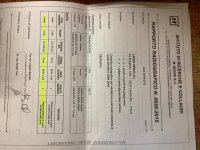
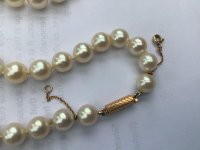
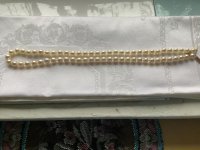
I love them,wear them regularly,and have no interest in selling them.However I am interested to know,with the sketchy description from the lab,if they are saltwater,or later well matched freshwater.? I had them restrung as the original silk was stretched and dirty,the pearls are slightly off spherical there are some that look a different shade,but it’s only noticeable to me in natural light ,they are lighter than the photos show. Whatever they are they are gorgeous,but some expert input would be much appreciated.5View attachment 77438




